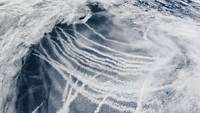Advertisement
Grab your lab coat. Let's get started
Welcome!
Welcome!
Create an account below to get 6 C&EN articles per month, receive newsletters and more - all free.
It seems this is your first time logging in online. Please enter the following information to continue.
As an ACS member you automatically get access to this site. All we need is few more details to create your reading experience.
Not you? Sign in with a different account.
Not you? Sign in with a different account.
ERROR 1
ERROR 1
ERROR 2
ERROR 2
ERROR 2
ERROR 2
ERROR 2
Password and Confirm password must match.
If you have an ACS member number, please enter it here so we can link this account to your membership. (optional)
ERROR 2
ACS values your privacy. By submitting your information, you are gaining access to C&EN and subscribing to our weekly newsletter. We use the information you provide to make your reading experience better, and we will never sell your data to third party members.
Environment
Cooling The Planet
Injecting sulfate into the stratosphere might deplete ozone layer, study says
by Rachel Petkewich
April 28, 2008
| A version of this story appeared in
Volume 86, Issue 17

Pumping large amounts of sunlight-reflecting sulfate into the atmosphere to offset global warming could further destroy the ozone layer in polar regions, according to a new modeling study that addresses one much-discussed geoengineering option (Science, DOI: 10.1126/science.1153966).
Scientists are worried that efforts to reduce fossil-fuel consumption and associated greenhouse gas emissions will not be enough to prevent severe consequences of climate change. Nobel Laureate and atmospheric chemist Paul Crutzen and other researchers have suggested that injecting sulfate into the atmosphere could mitigate global warming but should be tried only as a "last resort" (C&EN, Aug. 7, 2006, page 19).
The idea was inspired by volcanic eruptions that release gases that, in turn, form sulfate aerosols. The aerosols then reflect sunlight and cool the planet. However, the volcanic contributions are also known to deplete ozone. In the new work, atmospheric scientists Simone Tilmes at the National Center for Atmospheric Research in Boulder, Colo.; Rolf Müller at the Research Center Jülich in Germany; and Ross J. Salawitch at the University of Maryland, College Park, calculated that continually injecting sulfate into the stratosphere could delay recovery of the ozone hole over the Antarctic by 30–70 years.
The complex chemical reactions that eventually damage the ozone layer perpetuate on cold clouds when chlorine is released from lingering anthropogenic chlorine sources such as chlorofluorocarbons. Sulfate aerosols could provide surfaces that strongly enhance chlorine reactions and therefore indirectly lead to ozone depletion, Tilmes adds.
Other researchers note that ozone depletion is just one potential side effect of sulfate geoengineering. This study raises a yellow flag to proceed with caution, says Ken Caldeira, a climate scientist at the Carnegie Institution at Stanford University.






Join the conversation
Contact the reporter
Submit a Letter to the Editor for publication
Engage with us on Twitter